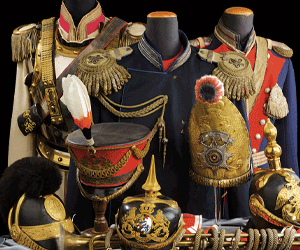RLB Female Members Service Tunic
SKU: 56.GOR.02.01.003
Estimated market value:

Estimated market value:
Attributes
History
Air raid protection organisations existed during the time of the Weimar Republic in the 1920s. However, in preparation for a coming war, a greater need for a centralised organisation under NSDAP control arose. It was established mere months after the NSDAP took control of Germany. The Reichsluftschutzbund (National Air Raid Protection League) or RLB was founded on April 29, 1933 under the control of Hermann Göring as Minister of Aviation. Naturally, its leader, as well as the nature of the organisation’s tasks, meant that the RLB would always have close ties to the Luftwaffe. All previously founded air raid protection organisations ceased to exist or were forcefully absorbed into the RLB.
The RLB’s function was to train the public on how to prepare for and deal with enemy air raids, and act as a supervisor of civil protection and defense, for both private homes and for places of work. Therefore, the RLB’s focus was split up into what was referred to as Selbstschutz (self-defense) for homes and Erweiterter Selbstschutz (extended self-defense) for places of work. Air raid protection of industry that was deemed essential to the war effort was referred to as Werkluftschutz (Factory Air Raid Protection) or WLS.
The core of the organisation was made up of high-ranking Luftwaffe officers (the RLB leader was always a Luftwaffe General) and a number of full-time salaried RLB members. These professional RLB members made up only a minority of the organisation, since the vast majority of members were, in fact, volunteers. Eventually, a law passed on June 26, 1935 made it a legal duty for almost everybody to receive training by the RLB.
In May of 1937, the Sicherheits- und Hilfsdienst (Security and Assistance Service) or SHD was founded. This was meant as a sister organisation of the RLB made up of professionals rather than amateurs, including firefighters, medical personnel, and specialist troops like public utilities repair service, gas decontamination service, or salvage crews.
At the same time, the Luftschutzwarndienst (Air Raid Warning Service) or LSW was founded. It was intended as an intermediary between the Flugmeldedienst (Flight Message Service) and the air raid protection organisations. The Flugmeldedienst was responsible for spotting enemy aircraft and determining their likely targets, so the population could receive a warning before an attack was carried out.
The SHD was split in the spring of 1942, with the Luftwaffe taking control of its mobile (motorised) units, and the Police taking control of its static units under the name of Luftschutzpolizei (Air Raid Defense Police).
The water-related units were formed into a new organisation, the Wasserstraßenluftschutz (Waterways Air Defense) or WSL. This organisation was entirely separate from and not affiliated with the Wasserschutzpolizei, the Water Protection Police. The WSL’s creation was officially announced on June 1, 1942.
RLB uniform regulations were first published on March 7, 1934. Civilian volunteer members were not eligible to wear official uniforms, only salaried full-time members like RLB Officers and, later, so-called Amtsträger (officials), including adjutants, group and department leaders, and office clerical workers wore them.
RLB uniforms are similar to the uniforms of the DLV (Deutscher Luftsportverband = German Air Sports Association), the precursor of the Luftwaffe. The RLB’s unique and identifying accent colour was lilac.
Members of the SHD and LSW wore Luftwaffe-style uniforms with their own insignia. Very little information on these extremely rare garments is available.
The RLB Service Tunic for women has two distinct patterns.
The 1st pattern was worn between 1934 and 1937. The design is the same as for the tunic used by men, except the lapels are blue-grey instead of black. Additionally, contrary to men, women wore no shoulder board on the right shoulder and no collar tabs on the collar.
As well, the buttons of the front closure are on the left side for women and the tunic closes right over left, while on tunics for men the buttons are on the right side and the tunic closes left over right.
The 2nd pattern tunic was introduced in 1938. The design was not as reminiscent of military style garments anymore. This pattern doesn’t feature breast pockets anymore. Additionally, both the collar and lapels were now black, and instead of a four button front closure, the tunic was now closed by three black buttons.


Comments
Sign in to comment and reply.


Scroll Top